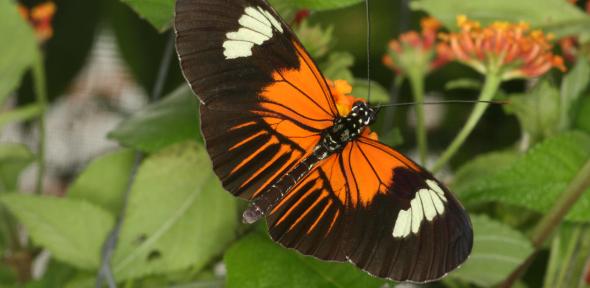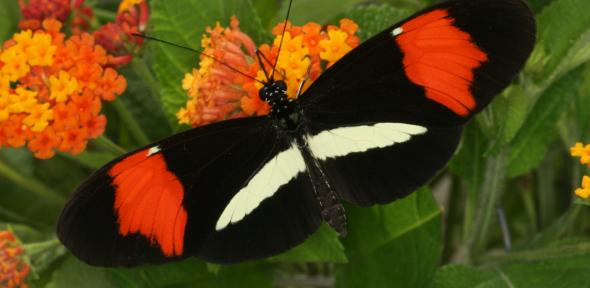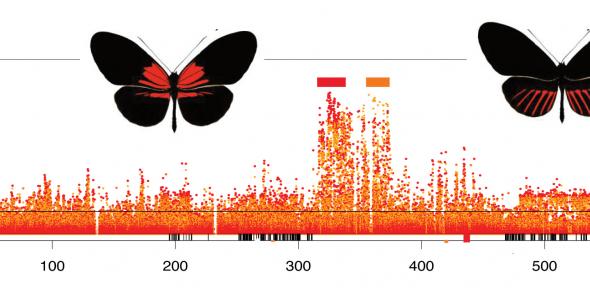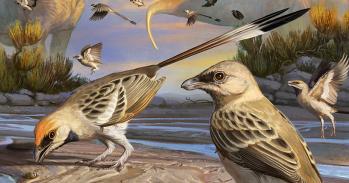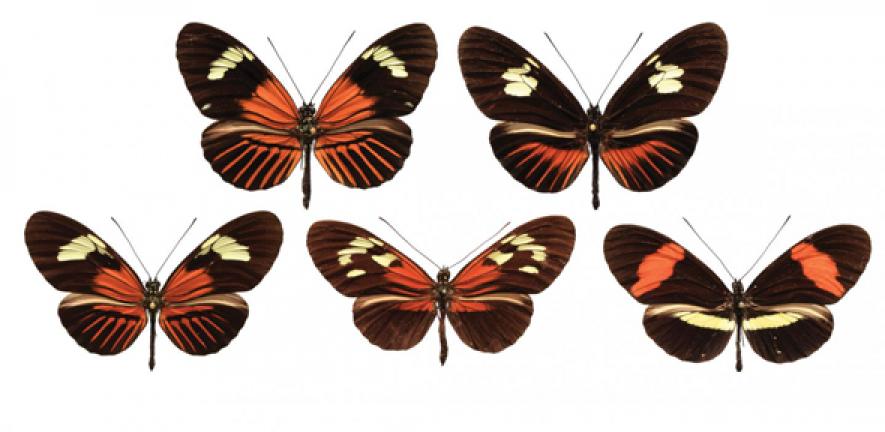
Research finds independent genetic switches control different splotches of colour and pattern on Heliconius butterfly wings, and that these switches have been shared between species over millions of years, becoming “jumbled up” to create new and diverse wing displays.
Research finds independent genetic switches control different splotches of colour and pattern on Heliconius butterfly wings, and that these switches have been shared between species over millions of years, becoming “jumbled up” to create new and diverse wing displays.
We can actually map onto the species tree how these little regions of colour have jumped between species
Chris Jiggins
New research on butterfly genomes has revealed that the genetic components that produce different splotches of colour on wings can be mixed up between species by interbreeding to create new patterns, like a "genetic paint box".
Research on Amazonian Heliconius butterflies has shown that two of the most common colour patterns, found in combination on the wings of many Heliconius species – the dennis red patch on the base of the forewing, and the ray red streaks that fan out across the hindwing – are controlled by separate genetic switches that arose in completely different species.
A team of researchers has traced the merging of these two wing pattern elements to interbreeding between butterfly species that occurred almost two million years ago.
It has been known for some time that exchange of genes between species can be important for evolution: humans have exchanged genes with our now extinct relatives which may help survival at high altitudes, and Darwin's Finches have exchanged a gene that influences beak shape. In butterflies, the swapping of wing pattern elements allows different species to share common warning signs that ward off predators – a phenomenon known as mimicry.
However, the new study, published today in the journal PLOS Biology, is the first to show such mixing of genetic material can produce entirely new wing patterns, by generating new combinations of genes.
"We found that different colour patches on the wings are controlled by different genetic switches that can be turned on and off independently. As these switches were shared between species they got jumbled up into different combinations, making new wing patterns," said senior author Professor Chris Jiggins, from Cambridge University's Department of Zoology.
The researchers sequenced the genomes from 142 individual butterflies across 17 Heliconius species and compared the DNA data, focusing on the regions associated with the two red colour patterns of dennis and ray on the forewing and hindwing. "In each butterfly genome, we narrowed down around 300 million base pairs of DNA to just a few thousand," said Jiggins.
They found that the genetic switches for these distinct wing splotches operated independently, despite being located next to each other in the genome. The sequencing revealed that the switch for each colour splotch had evolved just once, and in separate species, but had been repeatedly shared across all the Heliconius species at occasional points of interbreeding dating back almost two million years.
"By identifying the genetic switches associated with bits of wing pattern, when they evolved and how they diverged, we can actually map onto the species tree how these little regions of colour have jumped between species - and we can see they are jumping about all over the place," said Jiggins.
The key to this evolutionary butterfly painting is the independence of each genetic switch. "The gene that these switches are controlling is identical in all these butterflies, it is coding for the same protein each time. That can't change as the gene is doing other important things," said lead author Dr Richard Wallbank, also from Cambridge's Department of Zoology.
"It is the switches that are independent, which is much more subtle and powerful, allowing evolutionary tinkering with the wing pattern without affecting parts of the genetic software that control the brain or eyes.
"This modularity means switching on a tiny piece of the gene's DNA produces one piece of pattern or another on the wings – like a genetic paint box," Wallbank said.
Reference:
Wallbank RWR, Baxter SW, Pardo-Diaz C, Hanly JJ, Martin SH, Mallet J, et al. (2016) Evolutionary Novelty in a Butterfly Wing Pattern through Enhancer Shuffling. PLoS Biol 14(1): e1002353. doi:10.1371/journal.pbio.1002353

The text in this work is licensed under a Creative Commons Attribution 4.0 International License. For image use please see separate credits above.

